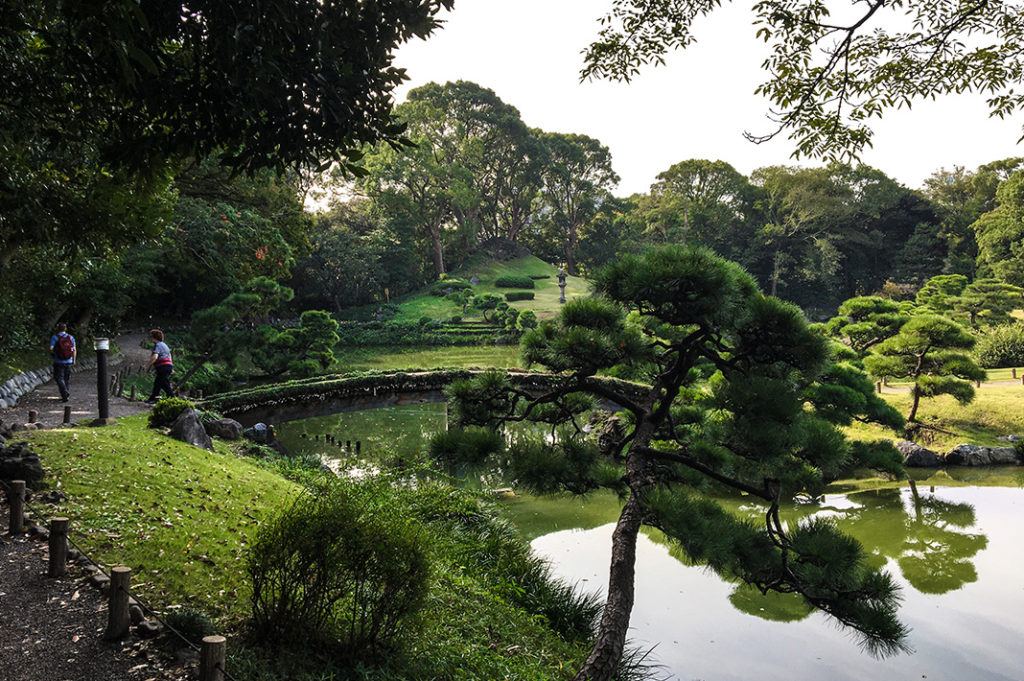There’s no shortage of beautiful parks and green spaces in Tokyo. So, to ensure you make the most of your time in the capital, we’d recommend you start by visiting one of the Metropolitan Cultural Heritage Gardens. These nine locations each have a fascinating backstory and offer a wonderful blend of nature, culture and history. On my mission to see all nine, I paid an early morning visit to the Kiyosumi Gardens in Fukagawa, where I learnt a thing or two about a thing or two.

A Brief History of the Kiyosumi Gardens.
The Kiyosumi Gardens were opened to the public in 1932—in an era where Japan was famously implementing Western concepts, such as creating public access parks. Before this, elaborate gardens like these existed on temple grounds or were privately owned by wealthy individuals. So who owned the Kiyosumi Gardens, you ask? None other than the founder of Mitsubishi, Iwasaki Yatarō. Iwasaki acquired the land in 1878 and quickly set about constructing the gardens. Their purpose was simple: to be a beautiful place for him, his employees and guests to enjoy.
Kaiyu Design.
The Kiyosumi Gardens follow the traditional circuit style, or kaiyu style. Central to the design is a large pond (dai-sensui) which features a few small islands and a picturesque tea house jutting out over the water.
Nearby is a huge mound of earth resembling Mount Fuji, aptly named Fuji-san, which is best viewed in May during azalea season. Then, surrounding all of this is a strolling circuit which allows you to see all of the main points of interest one by one.
The teahouse, called Ryo-tei, was built back in 1909 in order to entertain one of Iwasaki’s important guests: the famed WW1 British army officer Lord Kitchener. It remarkably withstood both the 1923 great Kanto earthquake and the 1945 WW2 bombings, which is lucky as the garden functioned as a refuge during both incidents.
Exotic stones.
The most notable aspect of Kiyosumi Gardens, however, is its curious collection of stones. During construction, Iwasaki used his financial and shipping resources to collect the biggest and rarest stones from all over Japan and have them brought here. Some are a deep red, others worn smooth by water, and some form a sturdy path underfoot as you explore.
The most exotic rocks have names and numbers, with small wooden plaques beside them. You can find a list of these details, in Japanese, with the brochures.
At the back of the gardens, you’ll spot a large stone inscribed with Matsuo Basho’s famous haiku. It reads: “The sound of a frog, jumping into an ancient pond”.
Another main point of interest are the iso-watari (stepping stones) arranged around the edge of the pond. These are designed not only to bring you up close to the koi and other pond-life, but to give you a shifting view of the landscape with every step.
Enjoying Nature
This is the main purpose of any garden, wouldn’t you say? Kiyosumi, like many Japanese gardens, was designed with four seasons in mind. Visit at any time of year and you’ll find something in bloom; plum and cherry blossoms, azaleas, iris, hydrangea, camellia and more. With over 4,000 trees, abundant wildlife and a serene pond, it’s one of the most relaxing spots in Tokyo. And it’s no wonder Kiyosumi Gardens was officially designated a Place of Scenic Beauty in 1979.
If you’re in need of a peaceful sanctuary in Tokyo, remember Kiyosumi Gardens; serenity is but a stone’s throw away.
How to get to Kiyosumi Gardens
Kiyosumi Garden is a 3 minute walk from Kiyosumi-shirakawa Station (exit A3). This is on the Toei Oedo and Hanzomon Lines. Morishita Station (Shinjuku line) and Monzen Nakacho Station (Tozai line) are also nearby.
Kiyosumi Garden
Address: 3-3-9 Kiyosumi, Koto, Tokyo
Open: 9:00a.m.–5:00p.m. (last entry 4:30pm), 7 days per week
URL: http://www.tokyo-park.or.jp/park/format/index033.html
Post by Japan Journeys.